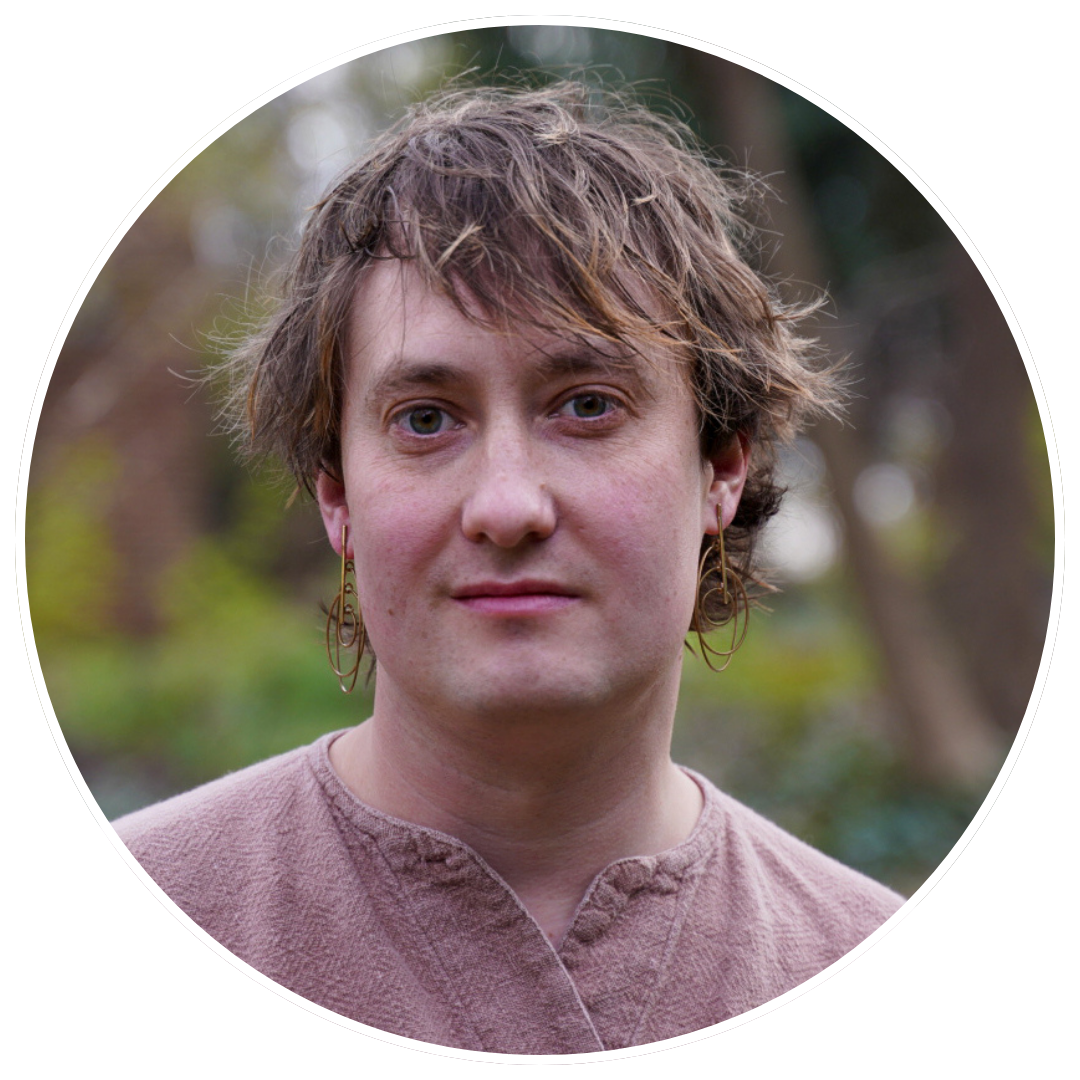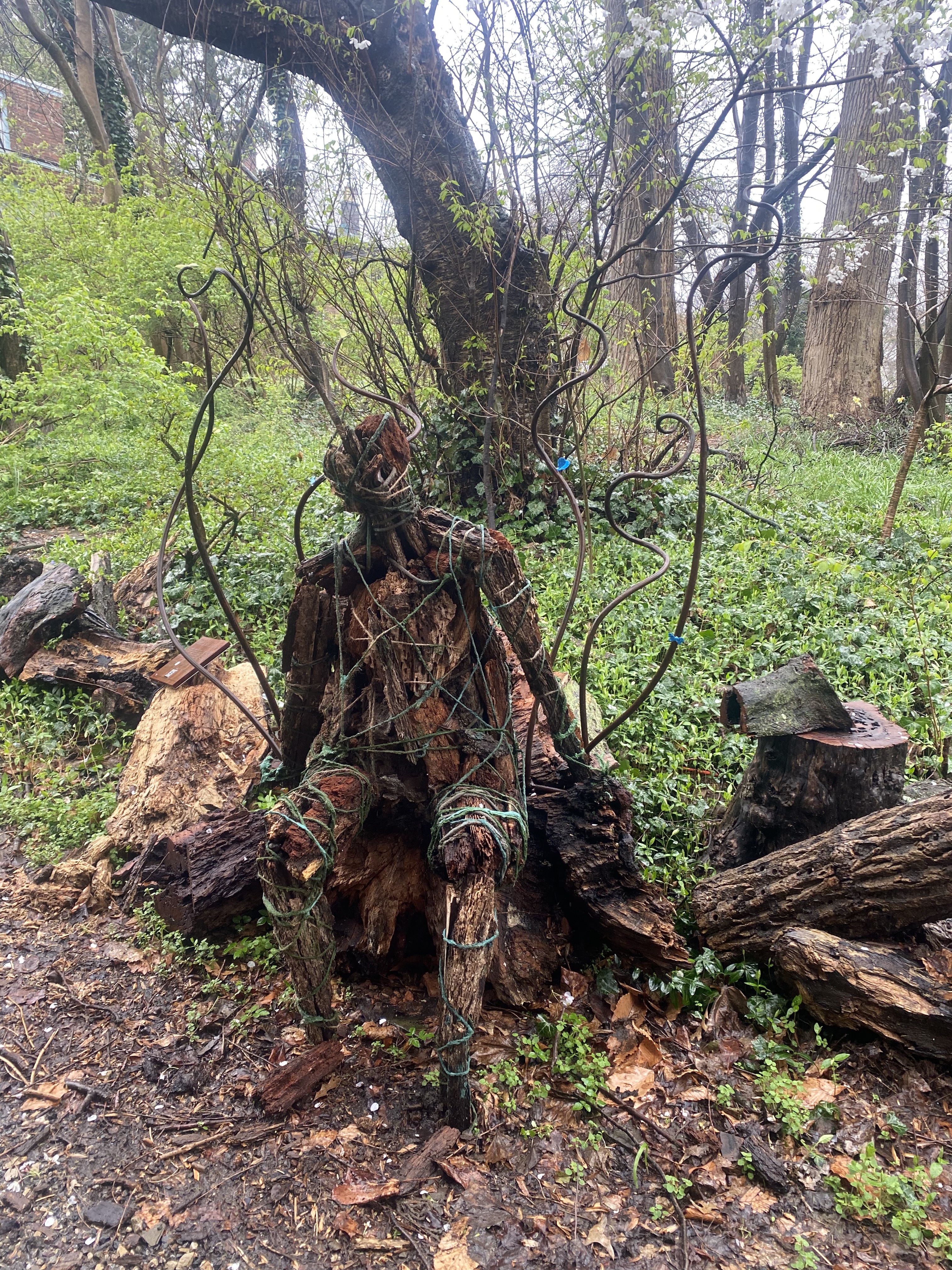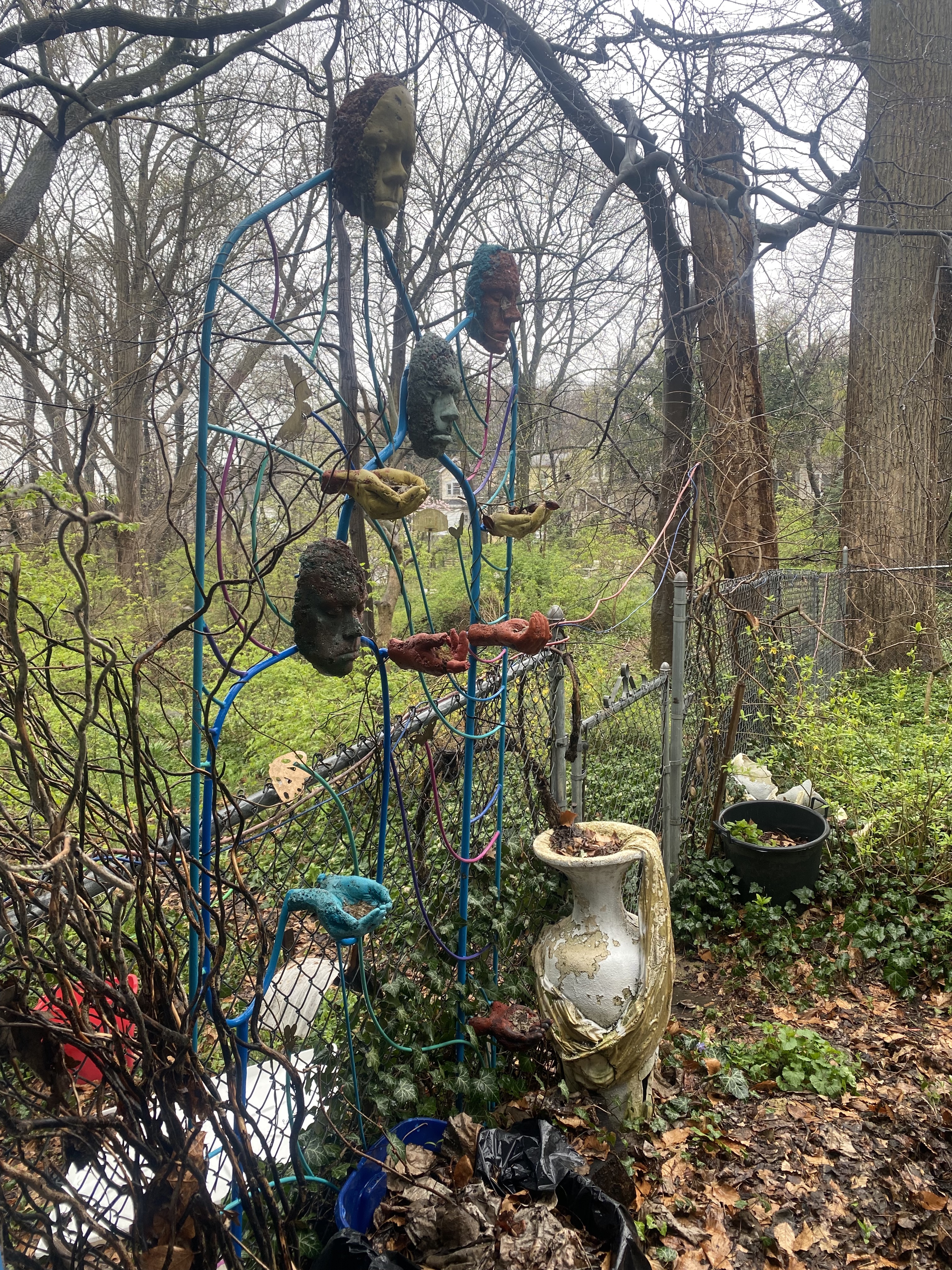Meet the Ecotopian Toolmakers: Q+A with Bobby Haskell
April 30, 2024
Bobby Haskell employs sculpture installations to protect and call attention to dead wood ecosystems. Merging traditional sculpture techniques with innovative conservation practices, Haskell's work explores new ways to reintegrate nature into the built environment, offering a creative response to ecological challenges.
We hope you’ll join us for Bobby’s workshop on Saturday, May 11 from 12:00 PM - 1:30 PM at Morris! Learn more on our events page.
PPEH: Briefly introduce yourself— Where are you from, what kind of work do you do, and what role you play in this project?
Bobby Haskell: I grew up in Bar Harbor, Maine, which is a small town on an island off the coast of northern Maine. I moved to Philadelphia when I was 20, and immediately fell in love with the city. I studied sculpture at the University of the Arts and have been living and making work in both Philly and Maine ever since, drawing inspiration from both environments.
I deeply resonate with the goals of the Ecotopian Toolkit project, and I am thrilled to be included this year as a toolmaker. Early on in my career I realized I wanted to make art with a positive impact on the world outside of art galleries and museums. Inspired by environmental art pieces like Mel Chin’s Revival Fields and Joseph Beuys 7,000 Oaks, I developed an approach called ‘habitat sculpture’ that has similarly direct and tangible impacts on the environment. In this approach, sculpture installations create habitat for plants and animals in cities and towns where habitat structures might be lacking.
The long-term goal of this approach is to help bring more nature into cities until they are places full of life and multispecies flourishing. I believe we need efforts like the Ecotopian Toolkit to create this kind of future, and I hope my contribution to this year’s toolkit will enable others to join in the endeavor.
PPEH: Tell us a little about your tool. How does your tool inspire and empower human visitors to support multispecies flourishing?
BH: My tool is Saproxylic Sculpture: Protecting Dead Trees the Urban Landscape. Saproxylic is a word that refers to creatures who depend on dead trees for their survival. The saproxylic ecosystem is as large and diverse as it is mysterious and understudied, and it is under threat thanks to the removal and destruction of dead trees.
This Ecotopian Tool saves dead trees and dead wood habitats in the city by installing sculptures that physically protect them and raise awareness of their crucial role as habitat. If we can find ways to increase the volume of dead wood in our cities we can save these creatures, and transform our urban landscapes into spaces of multispecies flourishing.
Users of this tool will see dead wood with new eyes by learning about fascinating creatures like stag beetles and red-backed salamanders, and will be shown how to make simple sculptures that attach to dead trees and fallen logs to protect them. The sculptures will spark discussions in the participants' communities where they will be able to spread the word about dead wood conservation, becoming ambassadors in the fight for an ecotopian future.

PPEH: Where do you find inspiration? Is there anything that’s been of particular inspiration to you lately? (Feel free to speak generally or get specific; we love a recommendation!)
BH: I’ve been finding inspiration in the architecture of Philadelphia for a miniature garden city I’m building. There are so many styles, historical periods, and levels of degradation and weathering, which can be beautiful in its own right. When natural forces act on architecture over many years there’s a sense of history and time that is physically tangible in a way that I think we naturally react to. In thinking about possible ecotopian futures, new archeological finds of huge, interconnected cities in the Amazon are very exciting. Looking into the past and at cultures around the world make it obvious that different relationships between cities and nature are possible, which I find very inspiring and exciting.
The films of Hayao Miyazaki have been a longtime inspiration for me when imagining possible futures and other worlds, and the recent anime series Scavengers Reign has fired up my imagination thinking about otherworldly creatures and natural systems.
PPEH: What role do you think art/ storytelling play in activism?
BH: My thoughts on this question have been evolving over the course of my career. I think I started out with optimistic naivety, veered into cynicism, and ended up being convinced that art does have a lot of power in this space, even if it can’t do the whole job by itself. New ideas have power in shaping the world, and the way art transmits ideas through an emotional experience can be very powerful. In my recent environmental work, I’ve been thinking about the advantages of open ended experimentation that is possible in art, but may be discouraged in traditional modes of social and political action. I think artists have roles they can play in affecting change, but need to be careful not to become too insular in our circles and venues where we show work and discuss ideas. That’s my approach anyway.♦
To read more about the Ecotopian Toolkit, past toolmakers, and this years’ call for proposals visit: https://ecotopiantoolkit.org/
To learn more about Morris Arboretum & Gardens visit: https://www.morrisarboretum.org/




